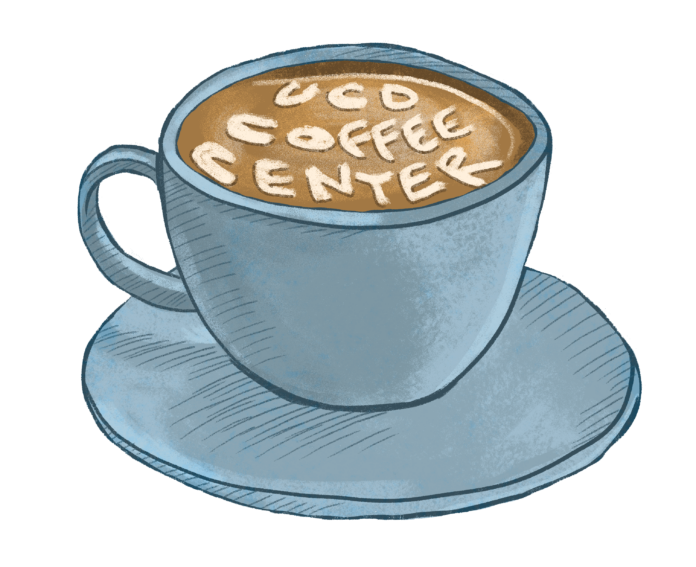The UC Davis Coffee Center is looking to make UC Davis one of the top places for coffee research and education
By KATELYN BURNS— science@theaggie.org
What began as an introductory chemical engineering course has become a center dedicated to coffee research and education.
One of the most popular undergraduate elective courses at UC Davis is ECH 001: Design of Coffee — An Introduction to Chemical Engineering. Started by Professors of Chemical Engineering and Co-Directors of the UC Davis Coffee Center William Ristenpart and Tonya Kuhl, the course gives students hands-on experience with engineering and science principles using coffee. Students also get roasting and brewing experience using the Coffee Brewing Control Chart, which uses factors such as total dissolved solids (how strong the coffee is), extraction yield (what fraction of mass was taken out of the solid coffee grounds into liquid phase) and brew ratio (the ratio of water to coffee grounds used).
“The whole process of roasting and brewing coffee really is chemical engineering,” Kuhl said.
Following the success of the Design of Coffee course and with the support of faculty interested in coffee and the coffee industry, the Coffee Center was built. The building remodel was entirely funded by donations, and the Coffee Center was reopened in spring 2024. It has an espresso lab, pilot roastery, analytical lab, green bean storage, sensory booths and more.
“[The Coffee Center is] the nation’s first academic center located on a college campus focused on coffee,” Ristenpart said. “The idea is to have everything you need for advanced coffee research and advanced coffee education under one roof.”
The Coffee Center may have built off of the success of the chemical engineering department’s Design of Coffee course, but it is meant to serve as a nexus for all coffee research on campus.
Timothy Styczynski, head roaster for the UC Davis Coffee Center, facilitates the material-handling side for graduate students at the Coffee Center during their research projects. These projects include Anokye-Bempah’s research into titratable acidity, which is a measure of total acid concentration.
“[Anokye-Bempah] found that there’s a bell curve of increase [where the data increases to a peak before decreasing] in titratable acidity of roasted coffee across the production cycle,” Styczynski said. “That had never been done before.”
Styczynski also discussed Roastpic, an app developed by UC Davis computer science students for evaluating coffee beans.
“A couple of computer science students, who also happen to be Q graders — which is similar to a sommelier for wine [but for coffee] — helped develop an app that uses a calibrated sheet for measured color using your cell phone’s camera,” Styczynski said.
Styczynski also discussed his hopes for future research at the Coffee Center.
“The hope is that we’ll be able to do a green coffee defects study,” Styczynski said. “Right now, the rules about defects date back almost 150 years, and they’re really a subjective view on something that’s good or bad about the green coffee.”
Coffee, while incredibly complex, is under-researched. From taste to sustainability to climate resistance to green coffee defects, there is a lot of room for improvement when it comes to the current coffee production processes.
“For something that is so valuable as a commodity — the monetary value is immense and the social-economic value is incredibly important — there’s very little research in coffee,” Styczynski said.
Written by: Katelyn Burns— science@theaggie.org





